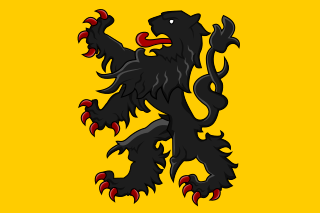Related Research Articles

The United Provinces of the Netherlands, or United Provinces, commonly referred to in historiography as the Dutch Republic, was a federal republic which existed from 1588 to 1795. It was a predecessor state of the Netherlands and the first fully independent Dutch nation state.

In France under the Old Regime, the Estates General or States-General was a legislative and consultative assembly of the different classes of French subjects. It had a separate assembly for each of the three estates, which were called and dismissed by the king. It had no true power in its own right as, unlike the English parliament, it was not required to approve royal taxation or legislation. It served as an advisory body to the king, primarily by presenting petitions from the various estates and consulting on fiscal policy.

The States General of the Netherlands is the bicameral legislature of the Netherlands consisting of the Senate and the House of Representatives. Both chambers meet at the Binnenhof in The Hague.
The Pragmatic Sanction of 1549 was an edict, promulgated by Charles V, Holy Roman Emperor, reorganising the Seventeen Provinces of the present-day Netherlands, Belgium, and Luxembourg into one indivisible territory, while retaining existing customs, laws, and forms of government within the provinces.

The Dutch Language Union is an international regulatory institution that governs issues regarding the Dutch language. It is best known for its spelling reforms which are promulgated by member states, grammar books, the Green Booklet and its support of Dutch language courses and studies worldwide. It was founded on a treaty concluded between the Netherlands and Belgium on 9 September 1980. Suriname has been an associate member of the Taalunie since 2004.

The Act of Abjuration is the declaration of independence by many of the provinces of the Netherlands from the allegiance to Philip II of Spain, during the Dutch Revolt.

In the history of the Low Countries, the Burgundian Netherlands were a number of Imperial and French fiefs ruled in personal union by the House of Valois-Burgundy in the period from 1384 to 1482 and later their Habsburg heirs. They constituted the Northern part of the Burgundian State. The area comprised the major parts of present-day Belgium, Netherlands, Luxembourg and Hauts-de-France.

Spanish Netherlands was the name for the Habsburg Netherlands ruled by the Spanish branch of the Habsburgs from 1556 to 1714. They were a collection of States of the Holy Roman Empire in the Low Countries held in personal union by the Spanish Crown. This region comprised most of the modern states of Belgium and Luxembourg, as well as parts of northern France, the southern Netherlands, and western Germany with the capital being Brussels.

The States of Holland and West Frisia were the representation of the two Estates (standen) to the court of the Count of Holland. After the United Provinces were formed — and there no longer was a count, but only his "lieutenant" — they continued to function as the government of the County of Holland.

The States of Flanders were a representative institution in the medieval and early modern County of Flanders. Initially it consisted only of the Third Estate, with representatives of the three cities of Bruges, Ghent and Ypres. Around 1350 the rural Liberty of Bruges also obtained representation in the States.

The Brabant Revolution or Brabantine Revolution, sometimes referred to as the Belgian Revolution of 1789–90 in older writing, was an armed insurrection that occurred in the Austrian Netherlands between October 1789 and December 1790. The revolution, which occurred at the same time as revolutions in France and Liège, led to the brief overthrow of Habsburg rule and the proclamation of a short-lived polity, the United Belgian States.

The Great Privilege was an instrument signed by Mary of Burgundy on 11 February 1477, which reconfirmed a number of privileges to the States General of the Netherlands. Under this agreement, the provinces and towns of Flanders, Brabant, Hainaut, and Holland recovered all the local and communal rights which had been abolished by the decrees of the preceding dukes of Burgundy Charles the Bold and Philip the Good in their efforts to create a centralised state on the French model out of their separate holdings in the Low Countries.

The Kingdom of the Netherlands, commonly known as the Netherlands, is a country and constitutional monarchy with the large majority of its territory in Western Europe and with several small West Indian island territories in the Caribbean.

The Dutch Republic Lion was the badge of the Union of Utrecht, the Republic of the Seven United Netherlands and is a precursor of the current coat of arms of the Kingdom the Netherlands.

The Lordship of Frisia or Lordship of Friesland was a feudal dominion in the Netherlands. It was formed in 1524 when Emperor Charles V finally conquered Frisia.

In the period 1482–1492, the cities of the County of Flanders revolted twice against Archduke Maximilian of Austria, who ruled the county as regent for his son, Philip the Handsome. The revolts were rooted in the cities' desire to maintain the autonomy that they had wrested from Philip's mother and predecessor, Mary of Burgundy, which Maximilian threatened to curtail. Both revolts were ultimately unsuccessful.

The County of Flanders was a historic territory in the Low Countries.

Conrad Schetz de Grobbendonck, later Conrad d'Ursel (1553–1632) was a nobleman in the Habsburg Netherlands and in 1604–1609 the first ordinary ambassador to England for the Archdukes Albert and Isabella.

Filips Wielant (1441/2–1520) was a magistrate and legal theorist in the Burgundian Netherlands, and a participant in the Flemish revolts against Maximilian of Austria.

The Burgundian State is a concept coined by historians to describe the vast complex of territories that is also referred to as Valois Burgundy.
References
- ↑ Wim Blockmans, "De samenstelling van de staten van de Bourgondische landsheerlijkheden omstreeks 1464", Standen en Landen 47 (1968), pp. 57-112; 65-66.
- ↑ J. Gilissen, "Les Etats Généraux des Pays de par deçà (1464-1632)", Standen en Landen, 33 (1965), p. 287.